Progettare abiti inclusivi ed eleganti per le taglie forti è fondamentale per promuovere la body positivity e abbattere i dannosi standard di bellezza sociali. Le persone formose sono state a lungo escluse dalla moda mainstream, con opzioni limitate che spesso mancano di stile e qualità. Comprendendo le esigenze e le preferenze uniche delle clienti più formose, gli stilisti possono creare capi che valorizzano e celebrano queste tipologie di corpo. Questo include utilizzando tessuti comodi ed elastici, incorporando elementi di design che accentuano le curve e sperimentando stampe e colori audaciLe persone curvy dovrebbero avere accesso a un'ampia gamma di stili che consentano loro di esprimere la propria personalità e individualità. È tempo di abbracciare tutte le corporature e creare abiti che facciano sentire tutti sicuri di sé e belli.
Capire i tipi di corpo taglie forti

L'industria della moda ha fatto molta strada in termini di inclusività e diversità, ma c'è ancora molta strada da fare. Uno degli ambiti che richiede maggiore attenzione è l' mercato delle taglie fortiIl termine "taglie forti" si riferisce a taglie di abbigliamento superiori alla media, in genere a partire dalla taglia 46 per le donne. È importante usare questo termine con rispetto perché riconosce l'esistenza di una vasta gamma di corporature e taglie, e non è un termine dispregiativo.
Purtroppo, esistono ancora molti equivoci e stereotipi sui corpi curvy che devono essere affrontati. Uno dei più comuni è che tutti i corpi curvy siano uguali. In realtà, ci sono molte tipologie di corporatura diverse all'interno della fascia curvy, proprio come ce ne sono all'interno della fascia di taglia normale. Alcune donne più formose concentrano il loro peso su fianchi e cosce, mentre altre lo concentrano su pancia o braccia. È importante che designer e produttori comprendano queste differenze e creino abiti che valorizzino ogni tipo di corpo.
Un altro stereotipo è che le donne curvy non si interessano alla moda o non vogliono indossare abiti alla moda. Niente di più lontano dalla verità. Molte vogliono indossare gli stessi stili e tendenze delle donne curvy, ma spesso faticano a trovare abiti che vestano bene e che siano pensati per il loro corpo. È qui che stilisti e produttori possono fare la differenza.
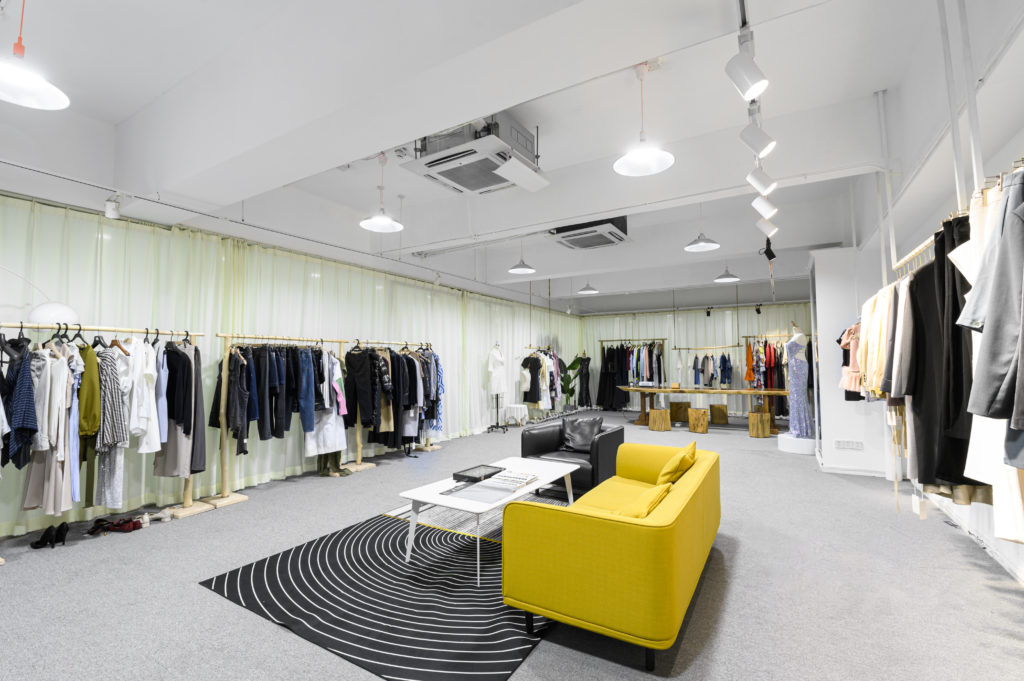
Se sei un produttore di abbigliamento femminile, produzione di abiti, produttore di gonne, o bisogno di abbigliamento su misura all'ingrossoEcco alcuni suggerimenti per entrare in empatia con le clienti curvy e comprendere le loro esigenze e preferenze uniche:
- Non dare per scontato che tutte le donne formose vogliano nascondere il proprio corpo. Molte sono orgogliose del proprio corpo e vogliono metterlo in mostra. Crea abiti che accentuino le loro curve e mettano in risalto i loro punti di forza.
- È importante comprendere che le taglie forti richiedono tagli e tessuti diversi rispetto alle taglie forti. Le donne formose spesso necessitano di più spazio su fianchi, cosce e braccia, e di tessuti elastici che si adattino ai loro movimenti.
- Non limitare i tuoi modelli a stili "esaltanti". Le donne curvy vogliono indossare tutti i tipi di abbigliamento, non solo quelli pensati per farle sembrare più piccole. Crea capi audaci, colorati e divertenti.
- Ascolta il feedback delle clienti curvy. Chiedi loro opinioni su vestibilità, tessuto e stile e usa il loro feedback per migliorare i tuoi modelli.
- Infine, non considerare l'abbigliamento taglie forti come un dettaglio secondario. Le donne curvy rappresentano una fetta significativa del mercato e meritano abiti eleganti e ben progettati quanto quelli per taglie forti.
In conclusione, comprendere le tipologie di corporatura delle taglie forti è fondamentale per designer e produttori che desiderano creare abiti inclusivi e che valorizzino le persone. Riconoscendo la diversità delle corporature curvy, dissipando gli stereotipi e creando abiti pensati tenendo conto delle loro esigenze specifiche, possiamo creare un'industria della moda più inclusiva e diversificata.
Creare design inclusivi ed eleganti: consigli per designer e produttori
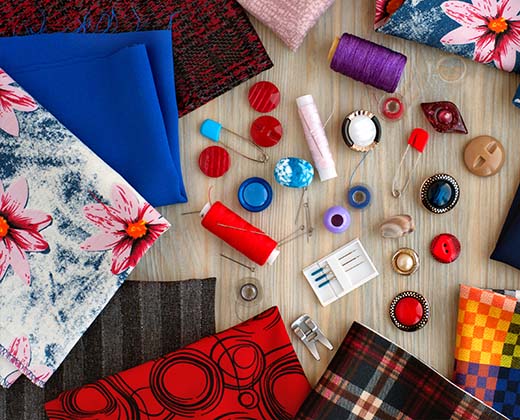
Progettare abiti per taglie forti richiede un approccio diverso rispetto alla progettazione per taglie standard. È importante considerare le esigenze e le preferenze uniche delle clienti curvy, creando al contempo capi eleganti e di tendenza. Ecco alcuni principi chiave del design che possono aiutare gli stilisti a creare capi che valorizzano i corpi più rotondi:
- La vestibilità è la chiave
La vestibilità è fondamentale nella progettazione di qualsiasi capo d'abbigliamento. Capi troppo stretti o troppo larghi possono risultare poco lusinghieri e scomodi. È importante creare capi che vestano bene e mettano in risalto i punti di forza del cliente.
- Mettere in risalto la vita
Molte donne curvy concentrano il loro peso nella zona centrale del corpo, quindi enfatizzare il punto vita può essere un ottimo modo per creare una silhouette lusinghiera. Questo può essere ottenuto attraverso l'uso di cinture, punti vita stretti o pantaloni e gonne a vita alta.
- Usa linee verticali
Le linee verticali possono aiutare ad allungare il corpo e creare un effetto snellente. Questo può essere ottenuto attraverso l'uso di strisce, cuciture o pieghe.
- Considera il tessuto e la consistenza
Il tessuto e la consistenza di un capo d'abbigliamento possono avere un impatto notevole sull'aspetto e sulla sensazione che dona al corpo. I tessuti morbidi ed elastici possono essere comodi e valorizzanti, mentre quelli rigidi o ruvidi possono risultare poco lusinghieri e scomodi.
Creare abiti che siano allo stesso tempo comodi ed eleganti per le clienti curvy può essere una sfida, ma non impossibile. Ecco alcuni suggerimenti per raggiungere questo equilibrio:
- Dare priorità alla comodità
La comodità dovrebbe essere sempre una priorità assoluta quando si progettano capi per taglie forti. Questo include l'utilizzo di tessuti morbidi ed elastici, l'evitare abiti attillati o costrittivi e la cura del posizionamento di cuciture e cerniere.
- Rimani al passo con le tendenze
Le clienti curvy desiderano indossare abiti eleganti e alla moda, proprio come chiunque altro. È importante rimanere aggiornati sulle ultime tendenze della moda e integrarle nei propri modelli.
- Offrire una varietà di stili
Le clienti curvy hanno gusti e preferenze diversi, quindi è importante offrire una varietà di stili che soddisfino gusti diversi. Questo include tutto, dall'abbigliamento casual all'abbigliamento elegante, passando per tutto ciò che sta nel mezzo.
Ci sono molti designer che hanno creato con successo linee di abbigliamento inclusive ed eleganti per clienti di grandi dimensioni. Un esempio Christian Siriano è stato elogiato per il suo impegno verso l'inclusività e la diversità nelle sue creazioni. I suoi abiti sono noti per essere eleganti e comodi al tempo stesso, e ha collaborato con modelle e celebrità di diverse corporature. Un altro esempio Eloquii è un marchio di abbigliamento specializzato in taglie forti. Offre un'ampia gamma di stili e taglie, e i suoi capi sono noti per essere alla moda e convenienti.
In conclusione, creare design inclusivi ed eleganti per i corpi curvy richiede un approccio diverso rispetto alla progettazione per dimensioni standardDando priorità alla vestibilità, sottolineando l' vita, utilizzando linee verticali e considerando tessuto e consistenza, gli stilisti possono creare capi che valorizzano le forme generose. Privilegiando il comfort, rimanendo al passo con le tendenze e offrendo una varietà di stili, gli stilisti possono creare abiti comodi ed eleganti per i nostri clienti target. E guardando a stilisti di successo come Christian Siriano ed Eloquii, i designer possono trovare ispirazione e consigli per creare linee di abbigliamento inclusive e diversificate.
Materiali e tecniche di costruzione
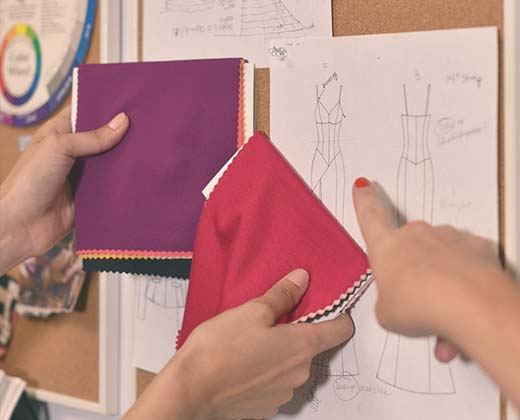
Quando si tratta di progettare abiti per corporature più generose, i materiali e le tecniche di confezione utilizzati possono avere un impatto significativo sulla vestibilità e sul comfort del capo. È importante scegliere materiali resistenti e adatti alle corporature più generose, e utilizzare tecniche di confezione che migliorino la vestibilità e il comfort del capo. Ecco alcuni suggerimenti per la selezione dei materiali e delle tecniche di costruzione per taglie forti produttori di abbigliamento femminile:
- Scegli tessuti elastici: I tessuti elastici come spandex ed elastan possono essere un'ottima scelta per l'abbigliamento taglie forti perché consentono maggiore flessibilità e libertà di movimento. Questo può rendere l'abbigliamento più comodo e valorizzante.
- Considera il peso del tessuto: Anche il peso del tessuto può influire sulla vestibilità e sul comfort dell'indumento. I tessuti più pesanti possono offrire maggiore supporto e copertura, mentre quelli più leggeri possono essere più traspiranti e comodi.
- Cerca tessuti con texture: I tessuti con texture, come la maglia a coste o la trama a nido d'ape, possono essere più morbidi e valorizzare le corporature più generose. Possono anche aggiungere un tocco visivo interessante all'abbigliamento.
- Utilizzare tecniche di costruzione che migliorino la vestibilità: Tecniche di costruzione come pinces, cuciture a principessa e plissettature possono contribuire a creare una vestibilità più valorizzante per le taglie forti. Possono aiutare a modellare l'abito sul corpo e a creare un look più sartoriale.
Sono molti gli stilisti che hanno utilizzato con successo materiali e tecniche di realizzazione innovativi per creare linee di abbigliamento inclusive ed eleganti per clienti curvy. Un esempio Universal Standard è un marchio di abbigliamento che utilizza tessuti e tecniche di produzione di alta qualità per creare capi eleganti e comodi. Offre inoltre un'ampia gamma di taglie, dalla 00 alla 40, per adattarsi a diverse corporature.
Un altro esempio Chromat è un marchio di abbigliamento specializzato in costumi da bagno e abbigliamento sportivo per tutte le corporature. Utilizza materiali innovativi come neoprene e mesh per creare capi funzionali ed eleganti, e offre una gamma di taglie fino alla 4X.
Scegliendo tessuti elastici, tenendo conto del peso e della consistenza del tessuto e utilizzando tecniche di costruzione che ne migliorano la vestibilità, gli stilisti possono creare abiti resistenti e adatti anche alle corporature più generose. E, ispirandosi a stilisti di successo come Universal Standard e Chromat, possono trovare ispirazione e consigli per creare linee di abbigliamento inclusive ed eleganti per clienti curvy. Come produttore di abbigliamento femminile Per un'azienda come la nostra, è importante dare priorità alle esigenze e alle preferenze di questi clienti e utilizzare materiali e tecniche di realizzazione che migliorino la vestibilità e il comfort dei capi.
Marketing e sensibilizzazione
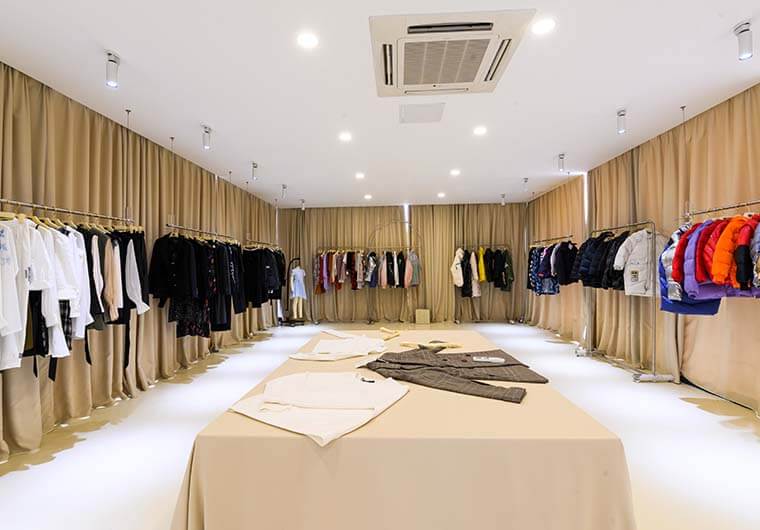
Creare linee di abbigliamento inclusive ed eleganti per clienti curvy è solo metà del percorso. È anche importante commercializzare e promuovere queste linee di abbigliamento in modo da celebrare e valorizzare le forme curvy. Ecco alcuni suggerimenti per designer e produttori per creare campagne pubblicitarie e di marketing che siano in sintonia con le clienti curvy:
- Utilizzare modelli diversi: Quando presenti i tuoi capi, usa modelle di diverse taglie e corporature per mostrare come stanno i capi su diverse corporature. Questo aiuterà i clienti a visualizzare l'effetto che i capi avranno su di loro.
- Celebrare la diversità: Assicuratevi che le vostre campagne pubblicitarie e di marketing celebrino e valorizzino le forme curvy. Questo può essere fatto attraverso l'uso di un linguaggio inclusivo, immagini diverse e messaggi che promuovano la body positivity.
- Offri suggerimenti di stile: Molte clienti curvy hanno difficoltà a trovare abiti che vestano e valorizzino il loro corpo. Offrire consigli e suggerimenti di stile può essere un ottimo modo per aiutarle a sentirsi più sicure e a proprio agio nei propri abiti.
- Interagisci con i clienti: Interagisci con i tuoi clienti sui social media e su altre piattaforme per creare una community e promuovere un senso di appartenenza. Questo può aiutare i clienti a sentirsi considerati e ascoltati e può anche fornire feedback preziosi a designer e produttori.
Molti stilisti hanno commercializzato con successo le loro linee di abbigliamento rivolgendosi a clienti curvy. Un esempio è Ashley Stewart, un marchio di abbigliamento specializzato in moda plus-size. Utilizzano modelle e messaggi diversi che celebrano e valorizzano le forme curvy, e offrono anche consigli e suggerimenti di stile per aiutare le clienti a sentirsi più sicure dei propri abiti.
Un altro esempio Savage X Fenty è un marchio di lingerie fondato da Rihanna. Utilizza modelli e messaggi diversi che promuovono la body positivity, e offre anche un'ampia gamma di taglie per adattarsi a diverse corporature.
In conclusione, il marketing e la sensibilizzazione svolgono un ruolo importante nella creazione di linee di abbigliamento inclusive ed eleganti per le clienti curvy. Utilizzando modelli diversi, celebrando la diversità, offrendo consigli di stile e interagendo con clienti, designer e produttori è possibile creare campagne pubblicitarie e di marketing che incontrino il gradimento di un maggior numero di clienti. E guardando a stilisti di successo come Ashley Stewart e Savage X Fenty, gli stilisti possono trovare ispirazione e guida per commercializzare le loro linee di abbigliamento per clienti curvy. Come produttore di abbigliamento femminile Per un'azienda come la nostra, è importante dare priorità al marketing e al raggiungimento di un gruppo più ampio di clienti, nonché creare campagne che celebrino e valorizzino tutte le tipologie di corpo.
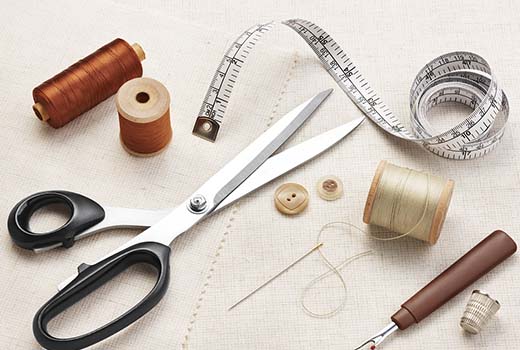
Conclusione
In sintesi, disegnare abiti per taglie forti richiede un approccio diverso rispetto a quello per taglie standard. È importante considerare le esigenze e le preferenze uniche delle clienti curvy, creando al contempo capi eleganti e di tendenza. Questo include la selezione dei materiali e delle tecniche di realizzazione più adatti, la priorità alla vestibilità e al comfort, e il marketing e la promozione delle linee di abbigliamento in modo da celebrare e valorizzare le taglie forti.
Come un azienda produttrice di abbigliamento femminileÈ importante dare priorità alle esigenze e alle preferenze delle clienti curvy e utilizzare materiali e tecniche di realizzazione che migliorino la vestibilità e il comfort dei capi. Applicando questi suggerimenti e strategie, gli stilisti possono creare abiti belli e inclusivi per tutte le corporature. È importante ricordare che tutti i corpi meritano di essere celebrati e accolti, indipendentemente dalla taglia. Creando linee di abbigliamento inclusive ed eleganti per clienti curvy, stilisti e produttori possono contribuire a promuovere la body positivity e a consentire a tutti di sentirsi sicuri e belli nei propri abiti.



